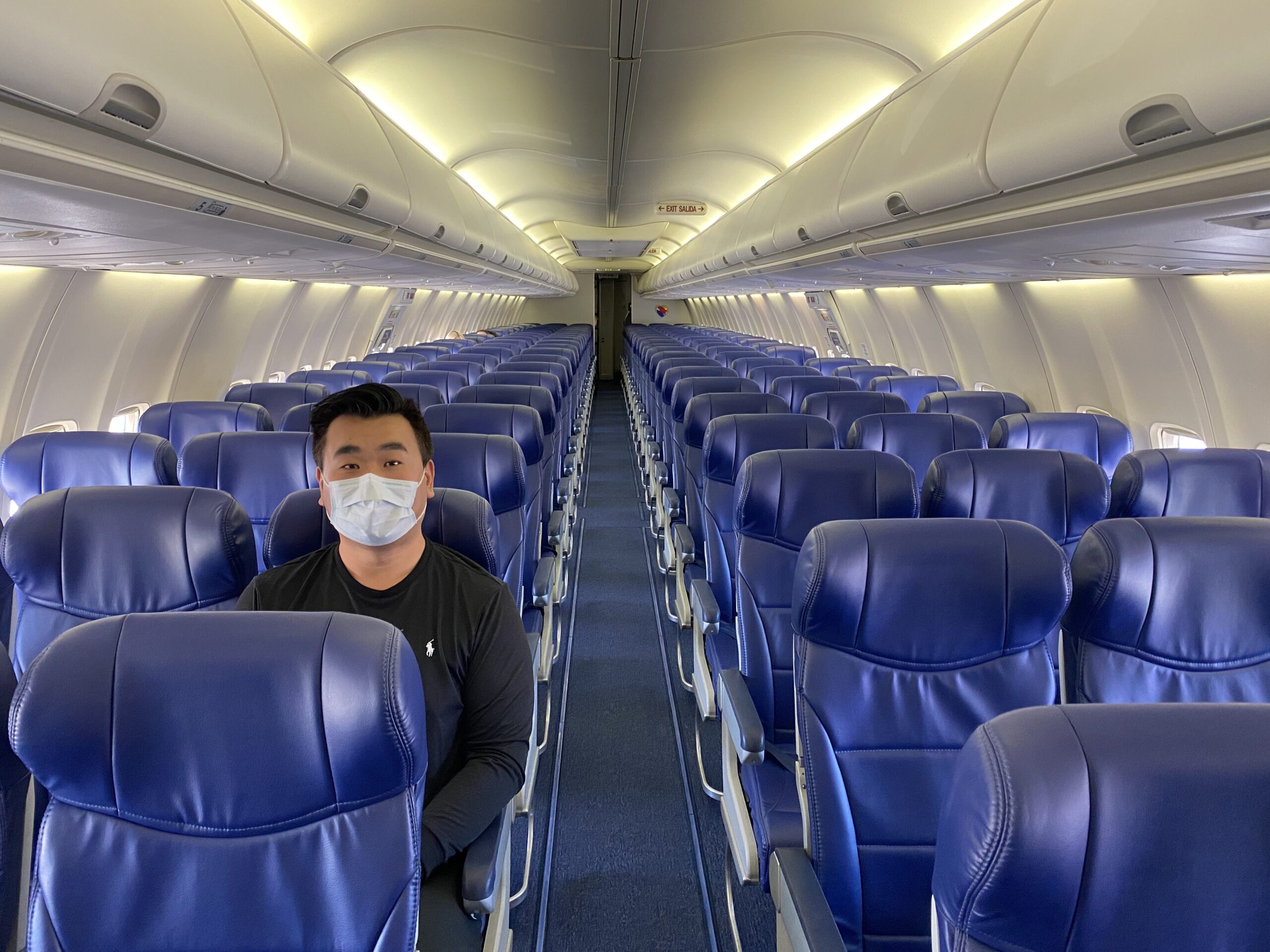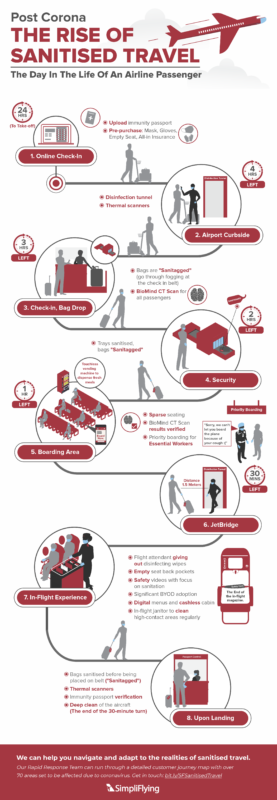This story is published from a report by the research institute SimpliFlying.
This report details over 70 different areas in the passenger journey, that are expected to either change or to be introduced from scratch, to restore confidence in flying after COVID-19.
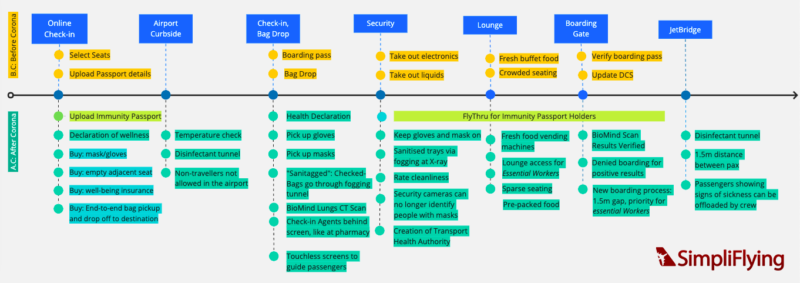
1 – Online Check-In
Travel, at least before coronavirus, has required touch at all stages of the process.
SimpliFlying has revealed that post-pandemic travel, in addition to the standard online check-in, may require a digital immunity passport to confirm the presence of COVID-19 antibodies, although the WHO has noted that there has been no confirmation of immunity as of yet.
This immunity passport is largely similar to the Yellow Fever card, used when travelling to humid tropical regions during summer.
Much of the check-in process may be done online to limit physical contact with airline staff.
2 – Airport Curbside
Before the age of coronavirus, passengers would usually arrive 1-3 hours prior to the departure of their flight.
A sanitised travel process might require passengers to arrive at least 4 hours prior to an international departure, according to SimpliFlying‘s report
If this is the case, no passenger would be admitted to an international departures area of an airport unless an immunity passport is presented. Alternatively, passengers would have to pass through a thermal scanner or similar health check.
3 – Check-In
Previously, passengers may never have had to visit a check-in counter – rather just walk straight through to security.
Post-pandemic check-in could require passengers to complete an almost instantaneous health scan, to assess any symptoms. SimpliFlying has likened it to a Biomed CT Scan.
Check-in staff will be behind protective barriers, similar to those used in hospital triages or pharmacies. Negative air pressure may also be used.
Passengers will be assigned seats directly on-site to optimise physical distancing on board. Furthermore, passengers will likely be given masks and gloves for use onboard; according to SimpliFlying.
4 – Security
SimpliFlying has revealed that ‘hygiene-enhanced’ security screening will take place at least 2 hours prior to an international departure.
Each carry-on bag could be repidly UV-sterilised, or fog-sterelised, before being X-ray scanned.
Passengers will be required to keep masks and gloves on, to prevent the spread of infection amongst passengers.
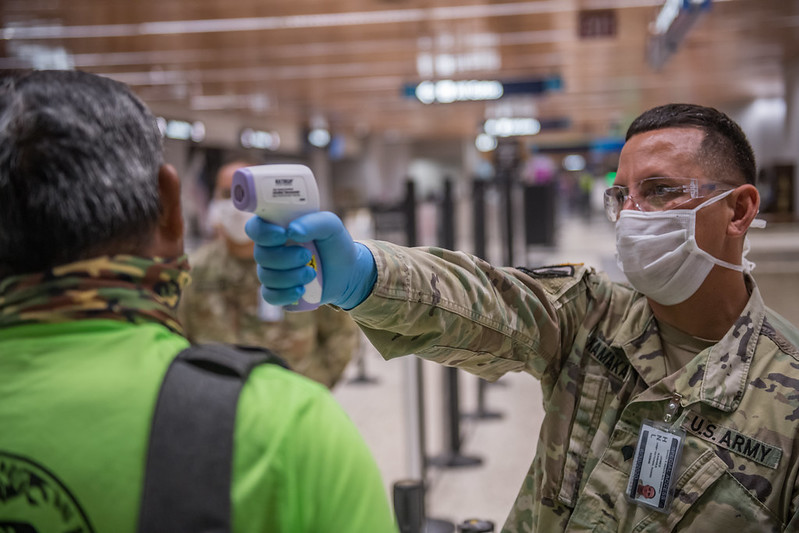
5 – Boarding
The boarding experience is set to be completely overhauled. Passengers may be required to arrive at the boarding gate at least 1 hour prior to an overseas departure.
SimpliFlying anticipates an ample presence of touchless vending machines, that will encourage the hygienic purchase of meals to be consumed on the ground or in the air.
Passengers will only be able to board when individually notified via mobile phone; the jetbridge will also comply with social-distancing requirements.
Of note, any passenger who returns an abnormal health assessment from check-in will be denied boarding.
6 – In-flight
The inflight experience will undoubtedly be altered in some way. Cabin crew may wear protective gear and all passengers will be checked, to ensure masks and gloves are worn.
Passengers will likely disinfect their seats with alcohol wipes provided, the cabin will be disinfected by spraying a mist through air vents and hand sanitiser may be provided.
There may be janitor onboard to provide regular cleaning, according to SimpliFlying.
Multi-course meal service in premium cabins may be changed. Instead, passengers in all classes could be served a pre-packaged, sealed meal to avoid any potential for contamination.
Seatback pockets will remain free of inflight literature and personal device use will be strongly encouraged.
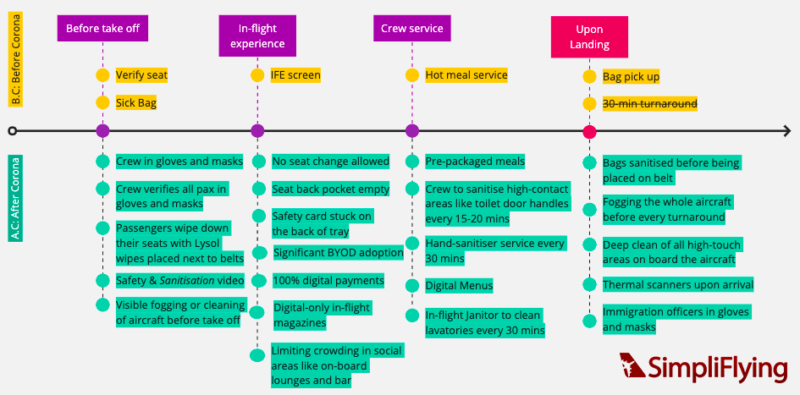
7 – Arrival at Destination
Upon arrival, passengers will likely be thermally-screened and checked for any health abnormalities.
Aircraft may require a deep clean after every flight, not just every night.
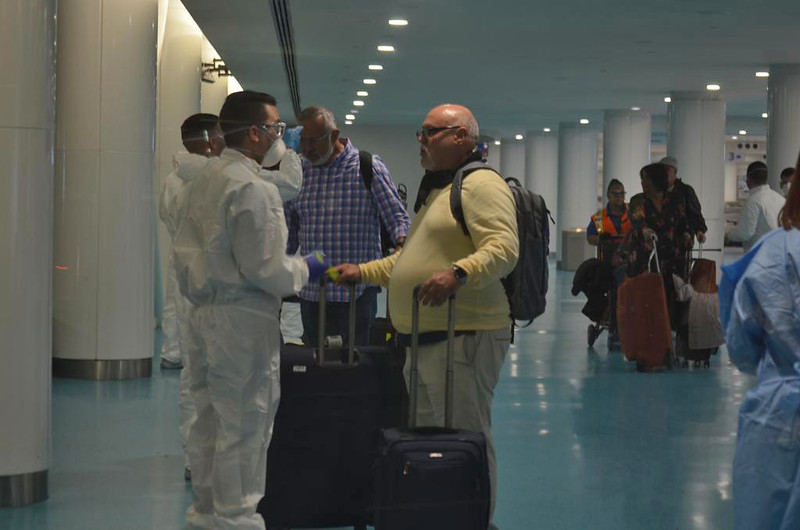
Travel post-coronavirus may indeed follow similar paths to what existed prior to the pandemic, however, there will undoubtedly be changes in the way passengers travel globally.
Article Source: SimpliFlying, a world-leading global aviation research institute.


